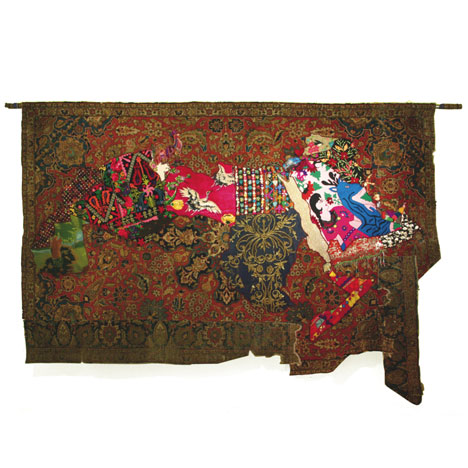Lebanese design duo Bokja have created embroidered maps of the Arab world that present a tapestry of changing politics and traditions.
The first of the two embroideries is entitled Arab Fall,while the second is named Arab Spring and shares its name with the wave of demonstrations and protests that began in 2010.
On the Arab Fall map, the sea is made from pairs of imported jeans to demonstrate how the rise of imported cultures has led to the replacement of native traditions.
The Arab Spring map is woven onto the centre of an old carpet, which is intended to represent the worn-out but cherished values of the Arab countries.
Both tapestries also contain a range of symbolic imagery, which includes a genie eating fast food and a flying elephant.
Hoda Baroudi and Maria Hibri of Bokja often use vintage Middle Eastern fabrics in their work. See a couple more of their projects here.
Here's a few more words from the designers:
Bokja's map of the "Arab Fall" interweaves imported jeans as a backdrop for the sad reality of an Arab world where imported fads and fast foods have replaced timeless traditions and native delicacies.
The flying elephant serves as a reminder of all the inane slogans that have been forced upon generations of an incredulous citizenry across the region.
It is this awakening that delineates Bokja's Arab Spring map.
The background is an old valuable carpet (representing our core values) that should be the basis of any new start.
The carpet is in a dilapidated state, like many of our discarded ideals and is in need of resurrection.
The mood is that of optimism and rejuvenation.
The symbols are many, among them a woman riding a horse on the road to a new and unknown world.

